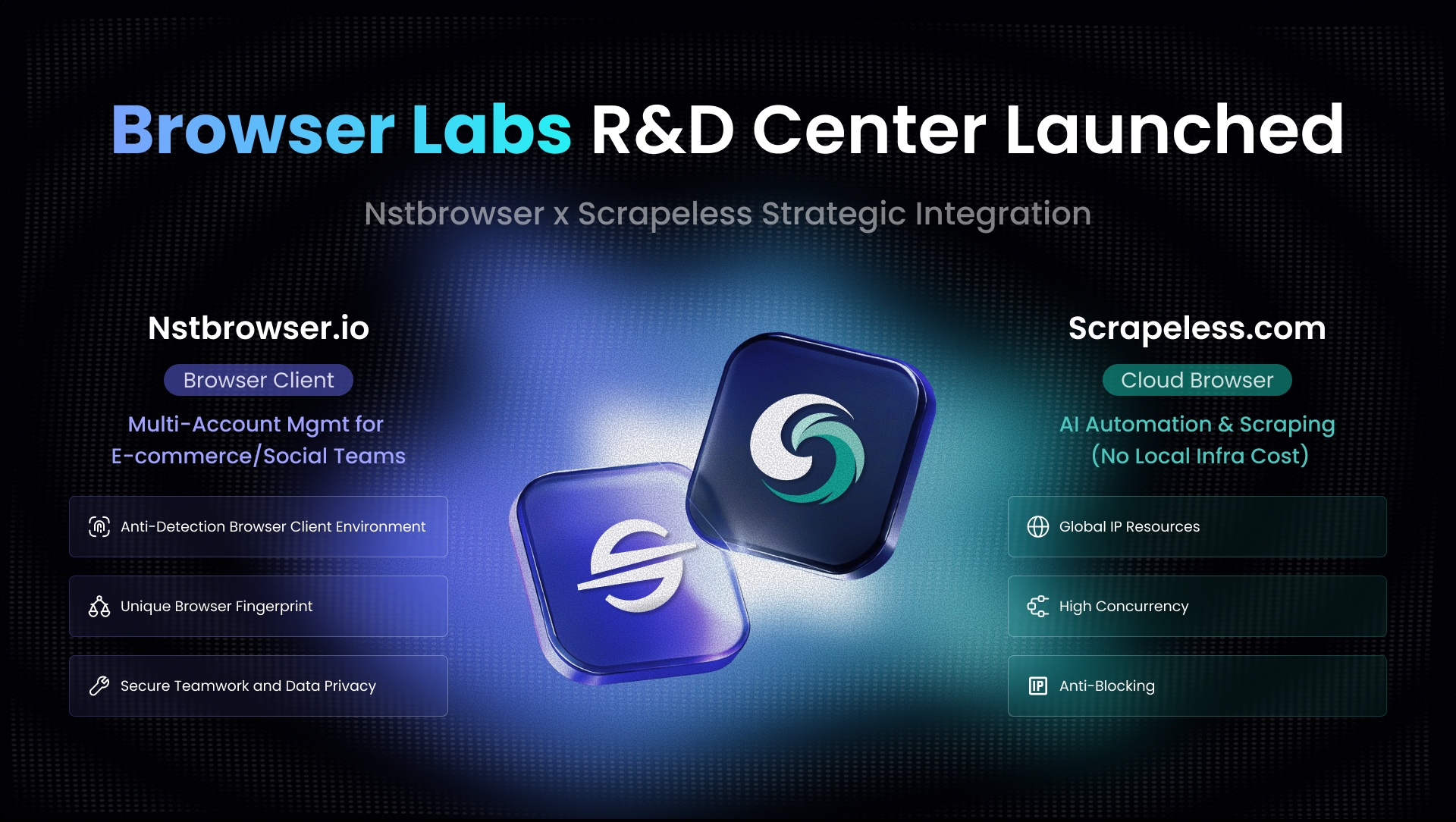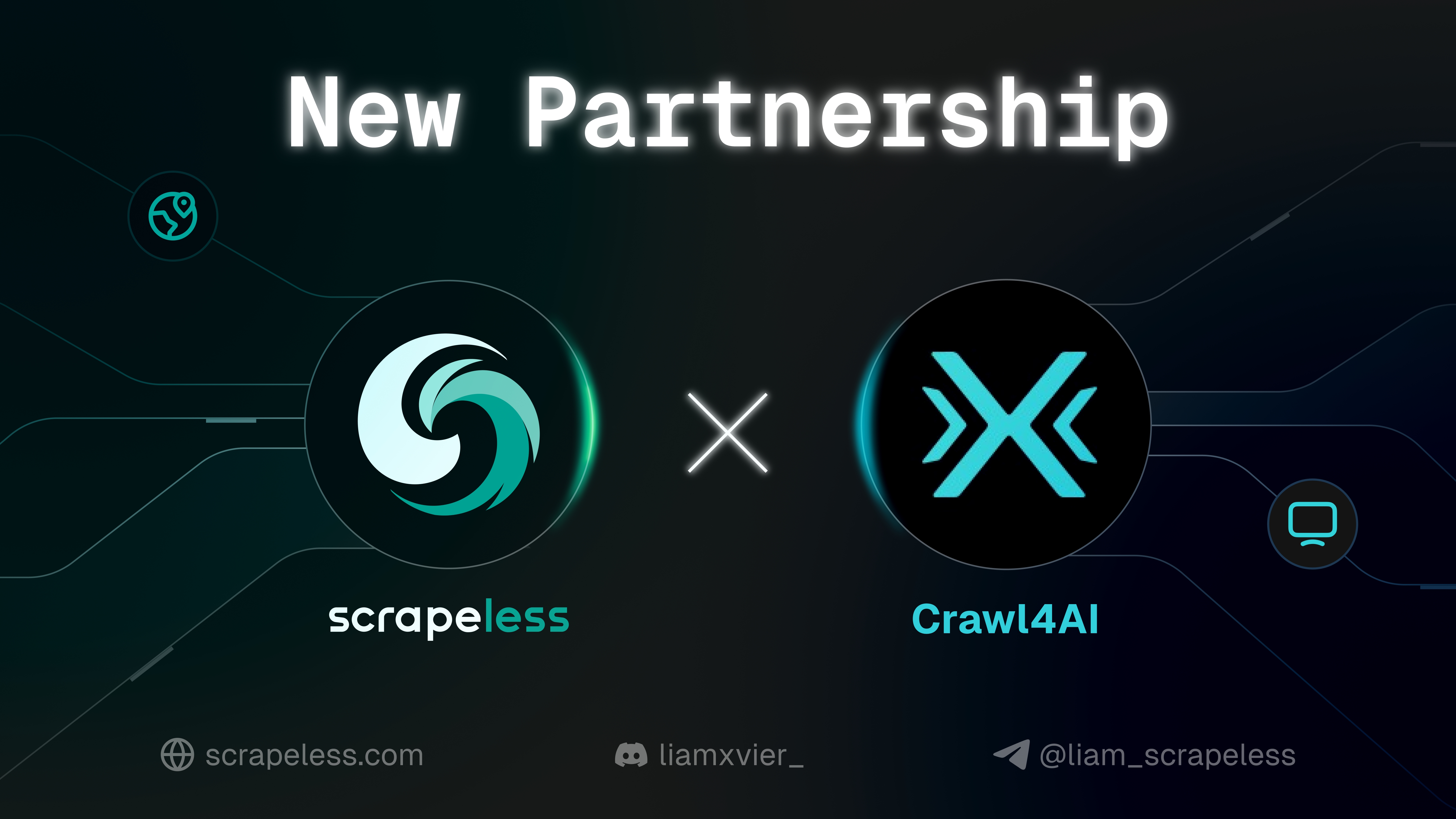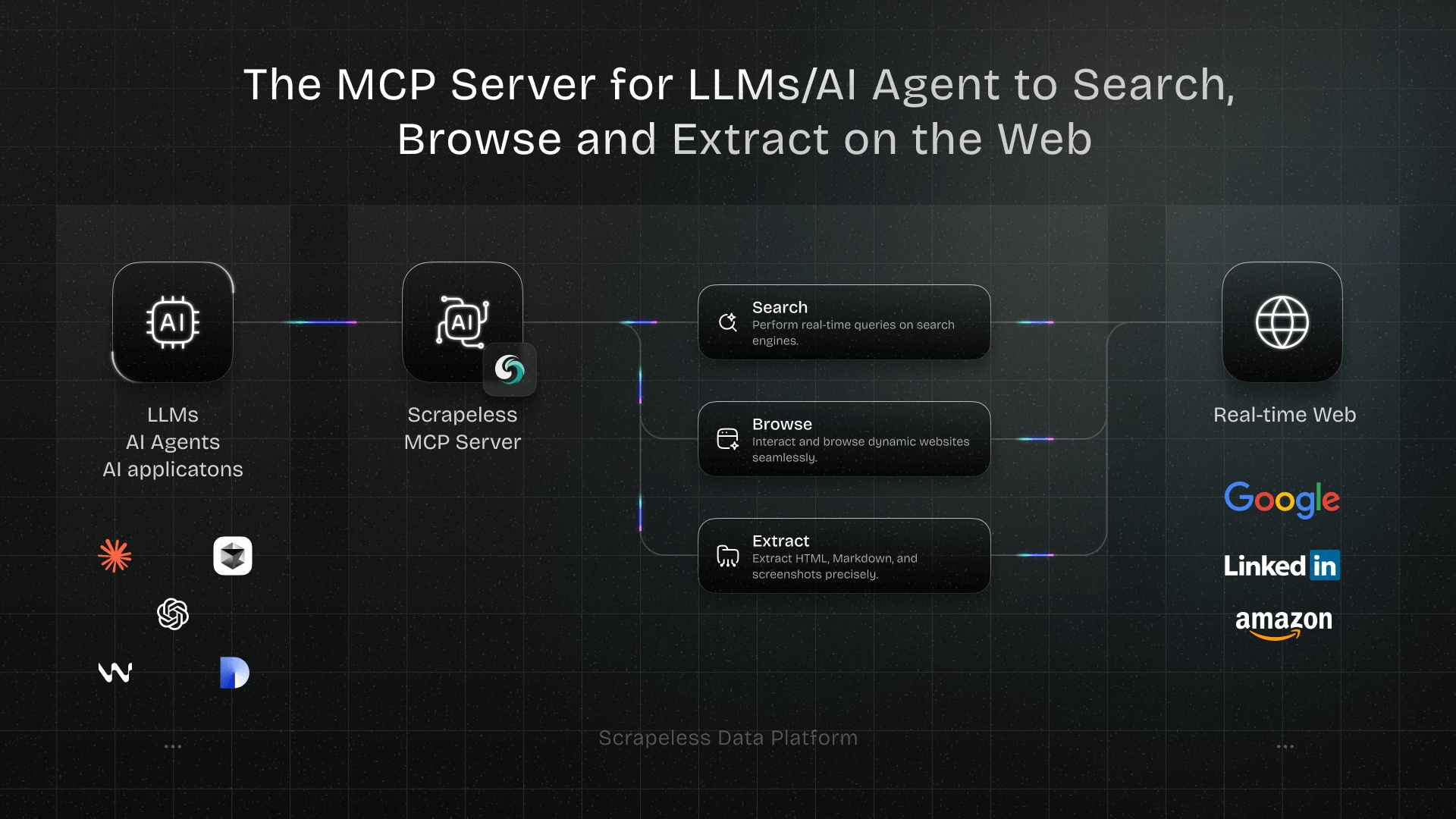What Is a Web Crawler? A Complete 2025 Guide
Expert Network Defense Engineer
Introduction
A web crawler is a program that automatically browses and collects information from websites.
It powers search engines, SEO tools, and large-scale data extraction systems.
In this guide, you’ll learn:
- How web crawlers work
- Common types and use cases
- Challenges and anti-bot defenses
- Best practices for stable crawling
- Why Scrapeless is the best solution for large-scale, unblockable web crawling
By the end, you’ll understand how to design, operate, or choose the right crawler for your data or SEO needs.
Key Takeaways
- A web crawler (also called a spider) automatically visits and indexes web pages.
- It’s essential for search engines, SEO audits, and data-driven business intelligence.
- Challenges include anti-bot protection, rate limits, and dynamic JavaScript content.
- Using Scrapeless lets you crawl any website without getting blocked by Cloudflare, DataDome, or Akamai.
- Follow best practices like throttling, proxy rotation, and respecting
robots.txt.
What Is a Web Crawler?
In short:
A web crawler is a bot that systematically browses the web to collect and organize information.
Search engines like Google, Bing, and DuckDuckGo rely on crawlers to build their index.
These crawlers start from a list of seed URLs and follow hyperlinks to discover new pages.
They store each page’s content, links, metadata, and structure for later analysis or indexing.
According to Cloudflare, crawlers are essential to maintain an up-to-date map of the web. Without them, search engines couldn’t deliver relevant results.
How Does a Web Crawler Work?
Conclusion first:
Crawlers follow a simple but powerful cycle — fetch, parse, extract, enqueue, and repeat.
The Basic Workflow
- Seed URLs: Start with an initial list of websites.
- Fetch Content: Download the HTML, scripts, and resources.
- Parse Links: Extract internal and external links.
- Enqueue New URLs: Add unvisited links to a “frontier” queue.
- Respect Rules: Check
robots.txtand meta directives (noindex/nofollow). - Throttle Requests: Delay between requests to avoid overloading servers.
- Store & Index: Save data for analysis or search indexing.
Crawlers also use deduplication (to avoid visiting the same URL twice) and canonicalization (to unify different URL formats).
As Wikipedia notes, this process can run at massive scale across distributed servers handling billions of URLs.
Types of Web Crawlers
Conclusion first:
Different crawlers serve different purposes — from global indexing to targeted data scraping.
| Type | Description | Example Use Case |
|---|---|---|
| Search Engine Crawler | Covers the entire web; updates constantly | Googlebot, Bingbot |
| Focused Crawler | Targets specific domains or topics | Niche SEO or news sites |
| Incremental Crawler | Fetches only updated pages | News or e-commerce updates |
| Deep / Breadth Crawler | Depth-first or breadth-first logic | Internal site audits |
| Dynamic Crawler | Executes JavaScript and AJAX | SPA or modern JS frameworks |
| Distributed Crawler | Runs on multiple servers for scale | Enterprise data pipelines |
A search engine crawler aims for coverage and freshness.
A focused crawler, by contrast, prioritizes relevance and topic-specific extraction — ideal for content aggregators or market intelligence tools.
Real-World Use Cases
Conclusion first:
Web crawlers are used in SEO, analytics, and real-time business applications.
1. Search Engine Indexing
Google’s crawler continuously discovers new and updated pages to keep search results current.
Without crawling, no website can appear in organic results.
2. SEO Site Auditing
Tools like Ahrefs, Screaming Frog, and Moz Pro crawl websites to identify broken links, duplicate tags, or noindex pages.
This helps SEO professionals optimize site structure and performance.
3. Price & Competitor Monitoring
E-commerce businesses use crawlers to track competitors’ prices and stock changes daily.
For example, a retailer may scrape product listings from Amazon or Walmart every hour to adjust its own prices automatically.
4. Content Aggregation
News aggregators, research databases, and academic repositories rely on crawlers to gather content from multiple sources.
| Use Case | Crawl Scope | Frequency | Key Challenge |
|---|---|---|---|
| Search Engine | Entire web | Continuous | Scale & freshness |
| SEO Audit | Single site | Weekly | Crawl depth, duplicates |
| Price Monitor | Competitor pages | Hourly | Blocking & CAPTCHAs |
| News Aggregator | RSS & article pages | Daily | Structure differences |
Challenges of Web Crawling
Conclusion first:
Crawlers face increasing defenses from anti-bot systems and dynamic content rendering.
Common Anti-Bot Measures
- Rate Limits: Sites block IPs with too many requests per minute.
- JavaScript Challenges: Cloudflare or DataDome inject client-side validation scripts.
- CAPTCHAs: Visual puzzles or reCAPTCHA to block automation.
- Browser Fingerprinting: Detects headless or automated browsers.
- Hidden Links / Honeypots: Invisible traps that expose crawlers.
According to Akamai’s bot report, 43% of total web traffic is automated, leading many sites to tighten bot protection.
Traditional crawlers built with libraries like requests or BeautifulSoup often fail when faced with JavaScript-heavy pages or anti-bot shields.
That’s where Scrapeless comes in — providing robust crawling that bypasses all these defenses.
Best Practices for Building a Crawler
Conclusion first:
Follow ethical guidelines, mimic human browsing, and use proper infrastructure.
1. Respect Robots.txt
Always check and obey robots.txt before crawling any domain.
Scrapeless explains how to crawl websites safely while minimizing legal and technical risks.
2. Use Throttling
Add random delays between requests. It helps avoid IP bans and server overload.
3. Rotate IPs and User Agents
Rotate your IP addresses and browser fingerprints.
Scrapeless offers a 70M+ clean residential IP pool with global rotation for safe large-scale crawling.
4. Handle JavaScript Rendering
Modern websites rely on JavaScript.
Use a headless browser like Playwright or Puppeteer, or rely on Scrapeless Browserless Service, which automates rendering with built-in human-like behavior.
5. Retry and Error Handling
Gracefully handle HTTP errors, redirects, and CAPTCHAs. Implement retry policies.
6. Data Deduplication
Normalize URLs and content hashes to avoid duplicates in your dataset.
7. Distributed Architecture
Use queues (like RabbitMQ) and multi-node workers to scale your crawler efficiently.
Why Use Scrapeless for Crawling?
Conclusion first:
Scrapeless allows you to crawl any website without getting blocked — no IP bans, no Cloudflare errors.
Scrapeless Advantages
- 🌍 70M+ Global Residential IPs — rotate automatically to avoid bans
- ⚙️ Built-in Browser Automation — handles JavaScript, scrolling, cookies
- 🧠 Cloudflare & DataDome Bypass — advanced fingerprint and TLS emulation
- 🧩 API Integration — connect easily with Python, Node.js, or n8n
- 💰 Transparent Pricing — as low as $0.6–1.8/GB
Learn more about their technology in:
If you want to collect large-scale data without worrying about blocks or captchas, Scrapeless is your ideal solution.
Conclusion
A web crawler is the foundation of modern information discovery — from Google search to competitive data monitoring.
While building one from scratch is possible, today’s web complexity (anti-bot layers, JS rendering, IP bans) makes it time-consuming and unstable.
With Scrapeless, you get a fully managed, unblockable crawling solution that:
- Bypasses Cloudflare, DataDome, and bot checks
- Simulates human browsers
- Provides global IPs with automatic rotation
🚀 Start your free trial now and see how effortless data collection can be:
👉 Try Scrapeless for Free
FAQ
1. What’s the difference between a web crawler and a scraper?
A crawler discovers and indexes web pages; a scraper extracts specific data from those pages. Crawling is broader, scraping is more targeted.
2. Is it legal to crawl any website?
Not always. You must follow robots.txt, respect site terms, and avoid private data collection.
3. Why do crawlers get blocked?
Because of repetitive patterns, static IPs, or missing browser behavior. Anti-bot systems easily flag them.
4. How can I avoid being blocked?
Use rotating IPs, delay requests, randomize headers, and rely on services like Scrapeless that manage it for you.
5. Does Scrapeless support API integration?
Yes. It offers REST APIs and SDKs for Python, Node.js, and more to easily embed into your automation workflows.
At Scrapeless, we only access publicly available data while strictly complying with applicable laws, regulations, and website privacy policies. The content in this blog is for demonstration purposes only and does not involve any illegal or infringing activities. We make no guarantees and disclaim all liability for the use of information from this blog or third-party links. Before engaging in any scraping activities, consult your legal advisor and review the target website's terms of service or obtain the necessary permissions.



